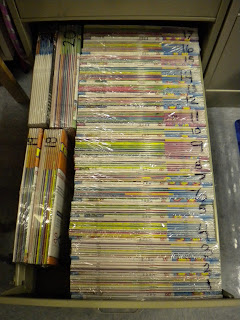Someone once said, "You don't know tired until you know teacher at the beginning of the year tired."
But I have gotten some rest since the first week is over and we celebrated with a 3-day weekend. Now that I can actually think for a minute, I wanted to share some resources that you might find helpful for the beginning of the year.
At this point I doubt there are many that have not heard of Cooperative Learning or Dr. Kagan. If you haven't you should Google it. I went to a wonderful university (TCU!!!) that had us read Dr. Kagan's book on Cooperative Learning. When my district began implementing these strategies I was ahead of the curve (that doesn't happen too often). As I have become a trainer / presenter I have heard some people mention that they aren't big fans of Cooperative Learning. When discussing this I have noticed a few trends: trying to implement too many of the strategies and jumping in to the strategies with content immediately.
First of all, as with any idea or resource - find the good parts of it and use those. You do not have to use pieces that do not fit your personality or class. I stick to a few tried and true Cooperative Learning strategies that work for me: inside/outside circle, 4 corners, numbered heads together, and mix-pair-share.
One major mistake I see new and veteran teacher alike make is that they try the strategy with content immdeiately. For instance, they try inside/outside circle with a grammar activity. The teacher introduces the strategy of inside/outside circle and then has the students try it with the inside circle holding a word card and the outside circle has to say if that word is a verb or a noun. This sounds great...just not for the first time.
That is why at this point in the year I introduce many of the strategies even though I won't put real content into them...yet. I introduce inside/outside circle and have the inside circle holding a card with their name on it. The outside circle goes around and reads their friend's names. So we are practicing forming circles, going around them, etc. but the 'content' is reading another child's name.
I do the same thing with 4 corners. One day I have pictures of candy, cake, cookies, and ice cream in each corner of the room. I show the students the four pictures and explain we will be playing a game. Then tell them to think of which one of the four they would like most. I have them close their eyes (so they don't pick what their friend picks) and tell the kids who like candy most to stand. They move to that corner (with their eyes open). I repeat for the other three choices. Then I have the students partner up at their corner and read each other's name. After we have that down I do another name activity such as look at each other's cards and find out how many letters you two have in common. The point is that you are doing something super-easy at this point so the focus is on learning the stucture of the activity.
At this point in the year when we have the ability to take it a bit slower I teach the structures. That enables me in a few weeks, when we are fully into heavy curriculum, to have my students use the structure with content. So we might go to four corners, partner up, and re-tell the story I just read aloud or share what we learned from a science experiment. These are great ways to enhance student learning if you teach the structure before you leap into content.
Here are some pictures I use for 4 corners. It is the only strategy that requires a little pre-work so I thought I'd share what I have so you don't have to re-create the wheel. I hope you will try some of your own Cooperative Learning and help engage your students. Maybe this will give you something to start with.
Happy teaching ~



















































